How to get a broken key out of a lock
It can be a nightmare when you put your house key in the door, turn it, and it breaks! Not only is a snapped key in a door lock an annoyance, but it is also a security risk. The ideal way to get a key out of a lock is to call a professional locksmith, but if you feel confident enough to try to retrieve the key yourself, continue reading to find out how to get a broken key out of a lock.
Last updated - 19/10/2022
Estimated reading time - 8 minutes
Most locks are key-retaining, which means that the key can only be removed once it is back in the position it was inserted in. So, before you try any of the methods outlined in this guide, you will need to make sure that the keyhole cylinder is aligned correctly.
The cylinder is the locking mechanism that you insert the key into in order to unlock a lock. Inside the cylinder is a set of different length pins that lock into place and unlock the door when the correct key is inserted and turned.
If the cylinder was turned when the key broke, the lock pins would no longer be able to move to let the key slide out. The cylinder has to be put back to its original position for the broken key to be removed from the lock. For most cylinder locks, like those commonly found on household doors, the keyhole should be vertical. You can use a paperclip or a small screwdriver to try to rotate the keyhole to its original position.
Call a locksmith
Removing a broken key from a lock can be tricky, and if done incorrectly, what started off as a jammed key could end up as a door lock repair. Locksmiths are technicians that are skilled at lock-picking, repairing a broken lock, and most importantly, in this case, removing a broken key from a lock. Different types of locks may require different methods to get a broken key out of a lock. A locksmith will be able to use the best tool and method to get the key out, and if need be, they will be able to remove and open the lock to retrieve the broken key.
If you feel like an emergency locksmith might be too expensive or if you don’t have time to wait for one, you can try some of the following methods.
Let us repair your door.
At Smart Plan we have thousands of engineers up and down the country who are ready to fix your issue.
Tweezers
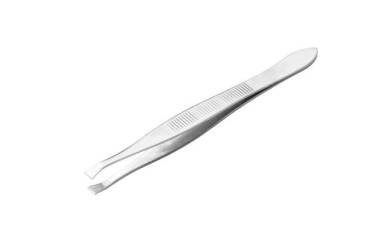
A pair of tweezers are often most people’s first port of call when looking for something to get broken keys out of door locks, as they can be found in most households.
How to get a broken key out of a lock with tweezers
If part of the broken key is sticking out of the lock, grab it with the tweezers and pull it out slowly. Do not try to yank the key out, as there is a possibility that the broken key might be snagged, so yanking on it could cause further damage. If you are having difficulty pulling it out, try jiggling it up and down to loosen it up while also pulling on it.
If no part of the broken key is sticking out and your tweezers are thin enough, you can try to insert them inside the keyway and along the sides of the key. If they aren’t thin enough, don’t attempt to insert them in the keyway, as you might push the key further in and make it even harder to remove.
Pliers
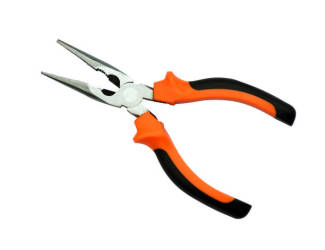
Pliers are a great removal tool if part of the broken key is sticking out of the door lock. Although any pair of pliers will help, needle-nose pliers will probably work best as they have a thin pointed tip that can easily grip onto small fiddly objects.
Just like the tweezers method, use the pliers to grab the part of the key that is sticking out of the lock and pull it gently. If you do not have any pliers, you can try using a spanner or wrench to pull out the key.
Broken key extractor
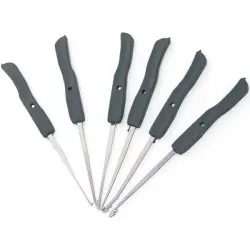
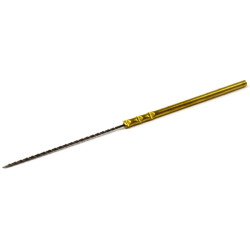
A broken key extractor is a tool specifically designed to get a jammed key out of a lock, which is what makes it a locksmith’s tool of choice in these situations. Broken key extractors come in different forms, two of the most commonly used are a spiral and a hook extractor.
Spiral key extractor
A spiral key extractor is a thin, bendable piece of metal with a spiralled thread, similar to a screw. The grooves along the spiral part of the extractor are meant to grip the broken key so it can be pulled out.
Hook key extractor
A hook extractor is a thin, bendable strip of metal that has a hooked end. The hooked end is used to grip onto any of the cuts on the broken key so that it can be pulled out.
How to get a broken key out of a lock with a spiral key extractor
- Insert the spiral key extractor in the cut along the side of the key.
- Push the extractor in as far as possible.
- Leverage the extractor tool so that it presses against the key. You might need to fiddle the extractor around a bit until you feel it press against the key.
- Once you feel that the extractor is pressed up against the key, slowly begin twisting the handle clockwise. If the extractor has gripped on the broken key, the rotating of the spiral extractor should retract the key out of the lock.
How to get a broken key out of a lock with a hooked key extractor
- If the cuts of the key are pointing upwards, insert the extractor at the top of the keyhole with the hook pointing down.
- If the cuts of the key are pointing downwards, insert the extractor at the bottom of the keyhole with the hook pointing up.
- Push the extractor through the keyhole until you feel it press against a cut on the broken key.
- Leverage the handle so that the extractor hooks into the cut of the key, and slowly pull the key towards you.
Paperclips
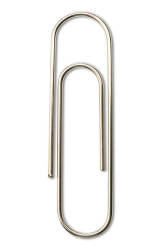
Similar to the key extractor technique, the goal of this method is to catch one of the cuts of the key with the end of the paperclip to pull out the key.
How to get a broken key out of a lock with paperclips
- Unfold a paperclip into a straight line.
- Insert the paperclip in the keyhole above or below the broken key
- Feed the paperclip as far back as possible without pushing the key.
- If you inserted the paperclip above the key, tilt the end that you are holding upwards so that the inserted end pushes down on the key.
If you inserted the paperclip under the key, tilt the end that you are holding downwards so that the inserted end pushes up on the key. - While applying some force on the key, pull the paperclip towards you.
This process may take many attempts, but if done properly, you will be able to retract the broken key.
Superglue
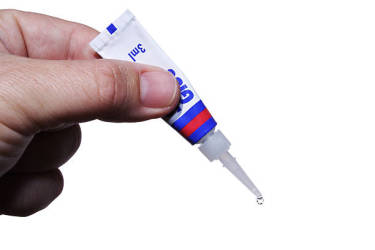
Using superglue to get a broken key out of a lock can be extremely tricky and should only be used as a last resort. If things go wrong, not only will you still have a stuck key in the lock, but you could also damage the inside of the lock cylinder too.
If the key is pushed back far into the keyhole and you can’t see any of it, do not attempt this method.
How to get a broken key out of a lock with superglue
- Find something thin enough to fit inside the keyhole, such as an unfolded paper clip or a match.
- Apply a single drop of superglue to the end of the object.
- Carefully insert the object into the lock. Make sure you do not touch the sides of the lock.
- Feed the object through the keyhole until you see or feel it touch the key.
- Once the object is in contact with the key, hold it steady for a few minutes to allow the glue to dry and stick to the key.
- Once the glue has set, slowly attempt to pull the key out of the lock.
How can I prevent my key from breaking in a lock?
Lubricate the lock
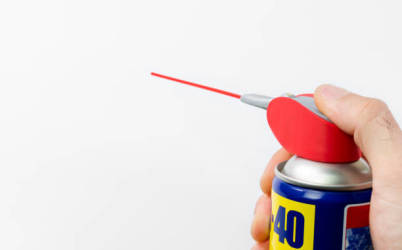
Over time, grit and tiny pieces of debris can get inside your door lock. This can make it difficult for keys to turn the lock or even cause them to get stuck inside. Lubricating the lock will make it smoother for keys to slide in and out.
The best way of lubricating a lock is to use graphite powder. Graphite powder is a dry lubricant that most locksmiths recommend using for the smooth operation of locks. You can buy graphite powder online or from a DIY store.
A cheaper way of using graphite to lubricate your locks is to rub a pencil on your keys. Simply rub the cuts of the key with a lead pencil (lead pencils are actually made from graphite, not lead) until the surface is covered with graphite. Put the key in the door and slide it in and out of the lock a few times. Repeat this process until the key glides in and out smoothly.
Another way to lubricate a door lock is to spray inside the cylinder with a silicone-based lubricant. Unlike water-based lubricants, silicone-lubricants will not rust the inside of the locking mechanism. A lubricant spray should come with a nozzle. Simply insert the nozzle into the keyhole and squirt the lubricant a few times.
You should never use oil to lubricate a lock. The oil will combine with the grime inside the lock and will clog up the mechanism.
You can dislodge grit and debris by using an air duster. An air duster is compressed air in a spray can. Just like a spray can of lubricant, an air duster should come with a thin nozzle attachment that easily fits into keyholes. A few blasts of the pressurised air should blow loose dust and dirt out of the lock’s cylinder.
Don’t pull the door closed with the key
If you often put your key inside a lock and pull the door shut with the key before locking the door, you risk breaking your key inside the lock. Repeatedly doing this will weaken the key and it could eventually snap.
Close your door shut before putting in the key to lock it.
Make sure you are using the correct key
We have all accidentally put the wrong key in the lock and tried to turn it a few times before realising. This is a common cause of broken keys in locks.
Once you realise you have inserted the wrong key, slowly turn the key back to the original insertion position and remove the key slowly and carefully.
To help avoid inserting the wrong key into a lock, you can make your keys more easily identifiable by putting different colour-coded covers on them.
Replace worn or damaged keys
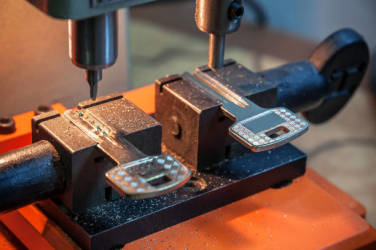
Old, worn keys are prone to breaking. You should always make sure you have a set of duplicate keys so that if you notice that your keys are worn or damaged, you can dispose of them and use the replacement keys. If you don’t already have any spare keys made, find your local key cutting service and have a copy made.

